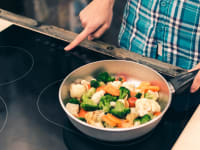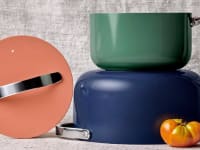Ceramic cookware pros and cons to know before you buy
Tips on treating and keeping ceramic cookware.
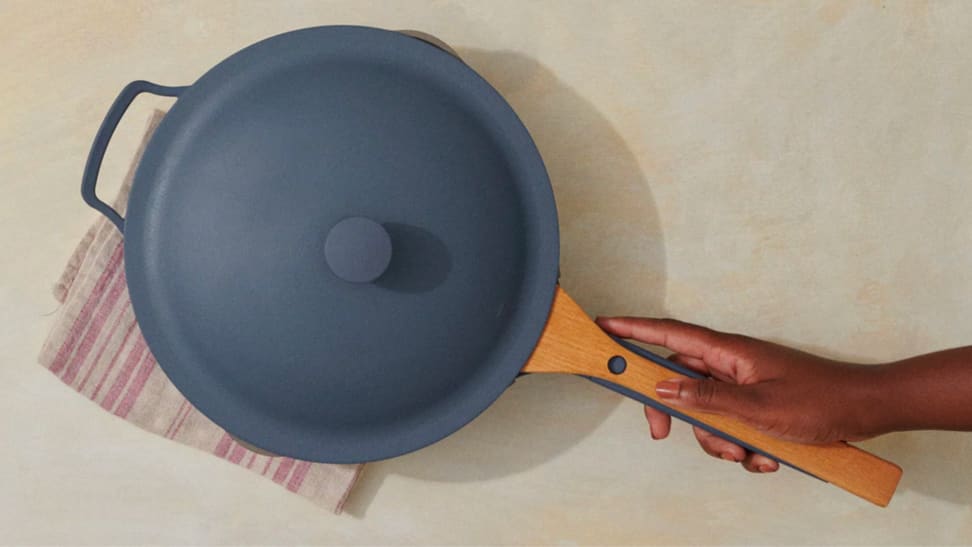 Credit:
Our Place
Credit:
Our Place
Recommendations are independently chosen by Reviewed's editors. Purchases made through the links below may earn us and our publishing partners a commission. Prices were accurate at the time this article was published but may change over time.
If you’re a regular on social media there’s a high chance you’ve seen a pastel-colored ceramic pan in the corner of an Instagram photo or used in a TikTok cooking video. Ceramic cookware brands like Our Place have taken over our social media feeds for their trendy, gorgeous, and functional products, like the Always Pan and Perfect Pot.
But, if you find yourself scratching your head as to why ceramic pans have become so popular, or are wondering what exactly makes them different from other types of cookware, don’t worry–you’re not alone.
Read on for an explainer on the pros and cons of cooking with ceramic cookware, and how these pans differ from the nonstick and stainless steel varieties that may already be in your kitchen.
What makes ceramic cookware different?
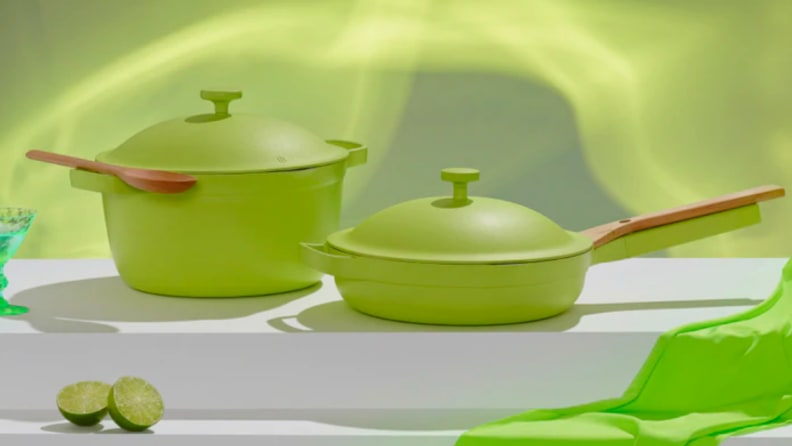
Go bold or muted with your color choices.
Ceramic quite literally translates to “clay that has been fire hardened.” When it comes to ceramic cookware, you can find it in two forms, either 100% ceramic or ceramic-coated.
The latter is usually made with an aluminum or stainless steel core and coated with a ceramic nonstick material. They’ve taken over the cookware market as a lightweight, nontoxic alternative to traditional Teflon nonstick pans.
In recent years, studies have shown that PFOA and other PFAS chemicals previously found in Teflon-coated pans, pose significant health risks. Ceramic cookware emerged as an alternative to Teflon, with brands such as Our Place and Caraway leading the brightly-colored ceramic revolution.
The pros of ceramic cookware
It’s lightweight and nonstick
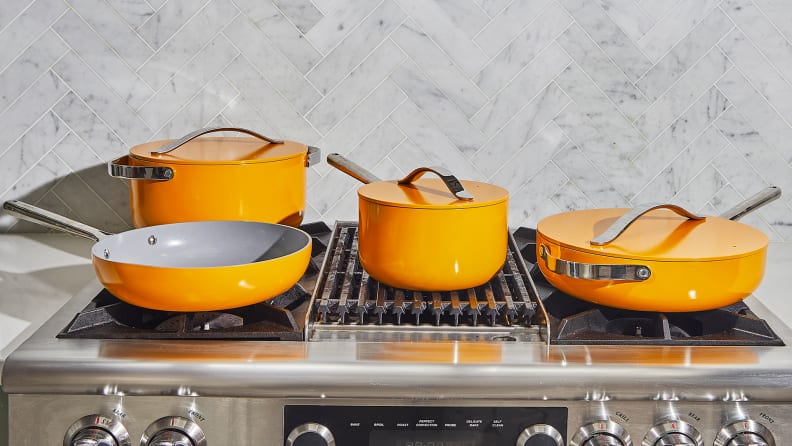
There's a variety of colorful cookware to choose from.
Unlike cast iron, the original nonstick pan, ceramic pans don’t require a seasoning process to get started and they are far more lightweight and easy to maneuver. Even compared to stainless steel pans, they offer more versatility and ease-of-use.
However, the biggest question everyone seems to have when it comes to ceramic cookware is, well, does it cook well? In short, the answer is yes—if you take care of it! (More about that later.)
Ceramic cookware is easy to clean
The nonstick coating does away with the need for any elbow grease to scrub food off surfaces. Handwashing is recommended for longevity with a bit of mild dishwashing soap, warm water, and a soft sponge.
Harsh scrubbing, while typically unnecessary, can also damage the nonstick coating and reduce the longevity of the pans.
Some ceramic cookware is quite affordable
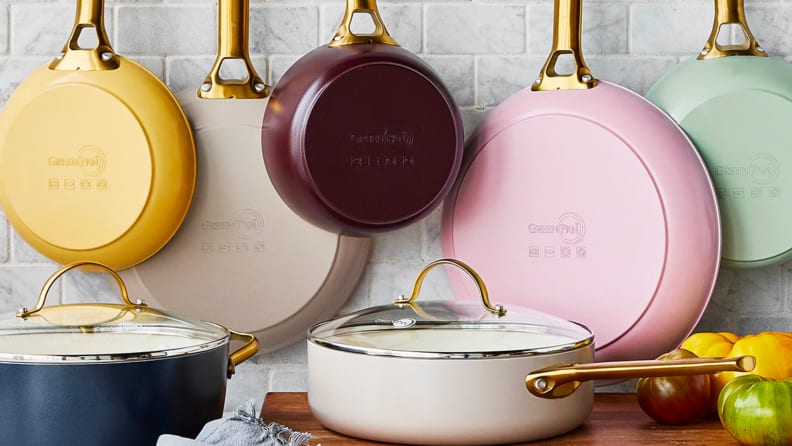
You don't have to break the bank to get a complete cookware set.
While high-style brands like Our Place and Carawy are on the more expensive end of the ceramic cookware spectrum, some ceramic sets, such as the GreenPan Valencia Pro set, are considerably cheaper than a comparable stainless steel set.
The claim to fame of cookware like the Always Pan from Our Place is its multifunctionality, making its price tag stretch a bit further.
The cons of ceramic cookware
Not all ceramic cookware is oven safe
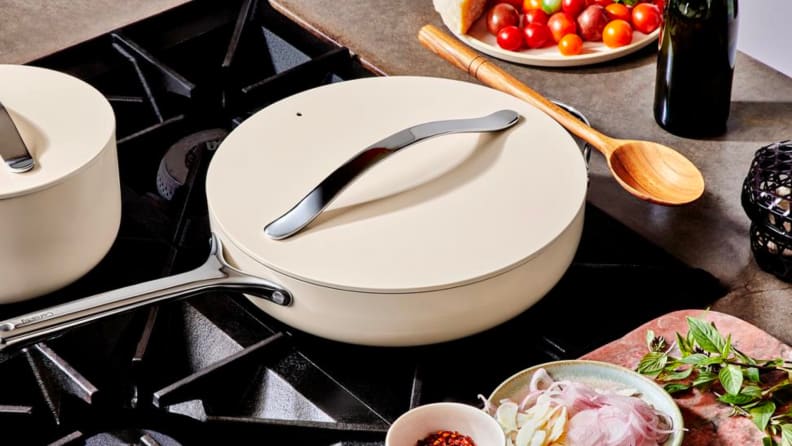
Always check the bottom of your ceramic cookware to see if it's oven safe.
When it comes to ceramic pots and pans with aluminum or stainless steel cores, oven safety varies. Caraway cookware can handle up to 550°F. The Always Pan is not considered oven-safe, although its Perfect Pot counterpart is oven safe up to 425°F. All are compatible with induction stoves.
On the stovetop, Our Place recommends temperatures be set to low to medium-low to preserve the nonstick coating, which should be fine for cooking most things, especially since ceramic heats quickly and evenly.
Always make sure to check the bottom of your cookware for an oven safe label.
As with all nonstick, ceramic cookware requires special care
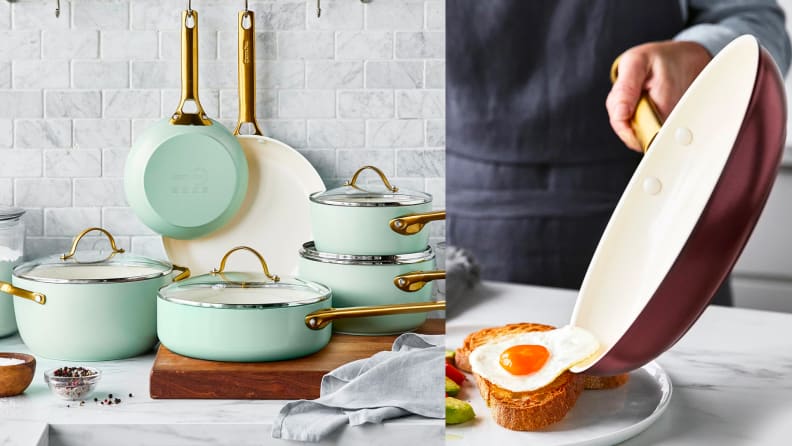
It's vital to be mindful of your ceramic cookware to making sure it doesn't chip or discolor.
Mindful care of ceramic cookware is critical to preventing chips and discoloration. The harsher you cook with and clean the pans, the faster its nonstick coating could deteriorate. Be careful to avoid scraping the surface of any ceramic pan with sharp implements like metal utensils.
Scratches from metal utensils or harsh scrubbing weakens the cookware’s nonstick layer, resulting in food and stains sticking more and the eventual risk of cracking.
If you’re a fan of the paler pastel-colored pans, keep in mind you will see eventual discoloration on the bottoms of the cookware.
If you like the sound of ceramic cookware, here’s where to buy it
- Get the Perfect Pot at Our Place for $165
- Get the Always Pan from Our Place for $145
- Get the Caraway Cookware Set at Caraway for $395
- Get the 11-Piece GreenPan Valencia Pro Set for $330 at Amazon
The product experts at Reviewed have all your shopping needs covered. Follow Reviewed on Facebook, Twitter, Instagram, TikTok, or Flipboard for the latest deals, product reviews, and more. Prices were accurate at the time this article was published but may change over time.

